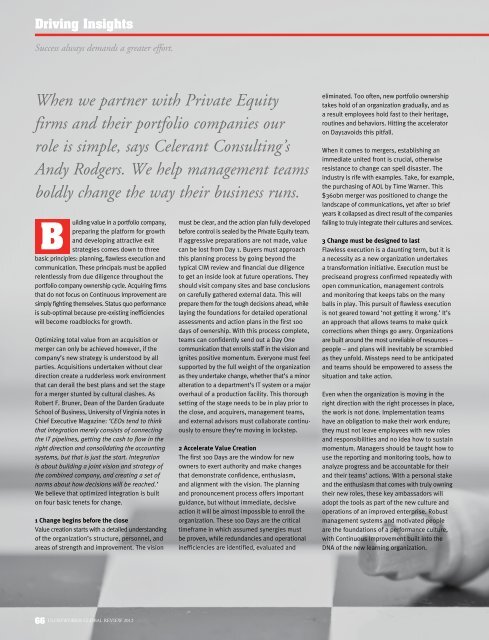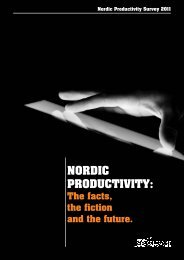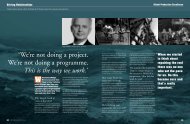download - Celerant Consulting
download - Celerant Consulting
download - Celerant Consulting
- No tags were found...
Create successful ePaper yourself
Turn your PDF publications into a flip-book with our unique Google optimized e-Paper software.
Driving InsightsSuccess always demands a greater effort.When we partner with Private Equityfirms and their portfolio companies ourrole is simple, says <strong>Celerant</strong> <strong>Consulting</strong>’sAndy Rodgers. We help management teamsboldly change the way their business runs.uilding value in a portfolio company,Bpreparing the platform for growthand developing attractive exitstrategies comes down to threebasic principles: planning, flawless execution andcommunication. These principals must be appliedrelentlessly from due diligence throughout theportfolio company ownership cycle. Acquiring firmsthat do not focus on Continuous Improvement aresimply fighting themselves. Status quo performanceis sub-optimal because pre-existing inefficiencieswill become roadblocks for growth.Optimizing total value from an acquisition ormerger can only be achieved however, if thecompany’s new strategy is understood by allparties. Acquisitions undertaken without cleardirection create a rudderless work environmentthat can derail the best plans and set the stagefor a merger stunted by cultural clashes. AsRobert F. Bruner, Dean of the Darden GraduateSchool of Business, University of Virginia notes inChief Executive Magazine: ‘CEOs tend to thinkthat integration merely consists of connectingthe IT pipelines, getting the cash to flow in theright direction and consolidating the accountingsystems, but that is just the start. Integrationis about building a joint vision and strategy ofthe combined company, and creating a set ofnorms about how decisions will be reached.’We believe that optimized integration is builton four basic tenets for change.1 Change begins before the closeValue creation starts with a detailed understandingof the organization’s structure, personnel, andareas of strength and improvement. The visionmust be clear, and the action plan fully developedbefore control is sealed by the Private Equity team.If aggressive preparations are not made, valuecan be lost from Day 1. Buyers must approachthis planning process by going beyond thetypical CIM review and financial due diligenceto get an inside look at future operations. Theyshould visit company sites and base conclusionson carefully gathered external data. This willprepare them for the tough decisions ahead, whilelaying the foundations for detailed operationalassessments and action plans in the first 100days of ownership. With this process complete,teams can confidently send out a Day Onecommunication that enrolls staff in the vision andignites positive momentum. Everyone must feelsupported by the full weight of the organizationas they undertake change, whether that’s a minoralteration to a department’s IT system or a majoroverhaul of a production facility. This thoroughsetting of the stage needs to be in play prior tothe close, and acquirers, management teams,and external advisors must collaborate continuouslyto ensure they’re moving in lockstep.2 Accelerate Value CreationThe first 100 Days are the window for newowners to exert authority and make changesthat demonstrate confidence, enthusiasm,and alignment with the vision. The planningand pronouncement process offers importantguidance, but without immediate, decisiveaction it will be almost impossible to enroll theorganization. These 100 Days are the criticaltimeframe in which assumed synergies mustbe proven, while redundancies and operationalinefficiencies are identified, evaluated andeliminated. Too often, new portfolio ownershiptakes hold of an organization gradually, and asa result employees hold fast to their heritage,routines and behaviors. Hitting the acceleratoron Day1avoids this pitfall.When it comes to mergers, establishing animmediate united front is crucial, otherwiseresistance to change can spell disaster. Theindustry is rife with examples. Take, for example,the purchasing of AOL by Time Warner. This$360bn merger was positioned to change thelandscape of communications, yet after 10 briefyears it collapsed as direct result of the companiesfailing to truly integrate their cultures and services.3 Change must be designed to lastFlawless execution is a daunting term, but it isa necessity as a new organization undertakesa transformation initiative. Execution must bepreciseand progress confirmed repeatedly withopen communication, management controlsand monitoring that keeps tabs on the manyballs in play. This pursuit of flawless executionis not geared toward ‘not getting it wrong.’ It’san approach that allows teams to make quickcorrections when things go awry. Organizationsare built around the most unreliable of resources –people – and plans will inevitably be scrambledas they unfold. Missteps need to be anticipatedand teams should be empowered to assess thesituation and take action.Even when the organization is moving in theright direction with the right processes in place,the work is not done. Implementation teamshave an obligation to make their work endure;they must not leave employees with new rolesand responsibilities and no idea how to sustainmomentum. Managers should be taught how touse the reporting and monitoring tools, how toanalyze progress and be accountable for theirand their teams’ actions. With a personal stakeand the enthusiasm that comes with truly owningtheir new roles, these key ambassadors willadopt the tools as part of the new culture andoperations of an improved enterprise. Robustmanagement systems and motivated peopleare the foundations of a performance culture,with Continuous Improvement built into theDNA of the new learning organization.66CLOSEWORK® GLOBAL REVIEW 2012








